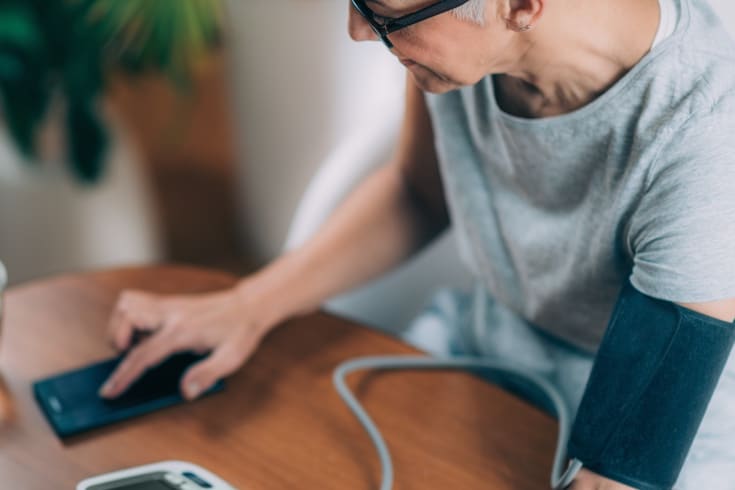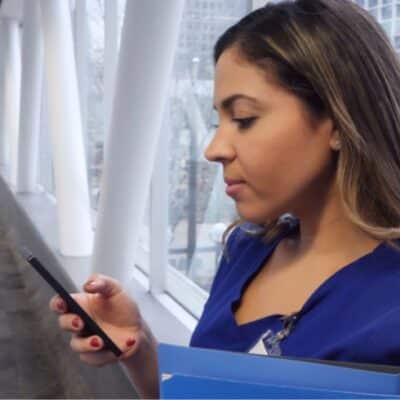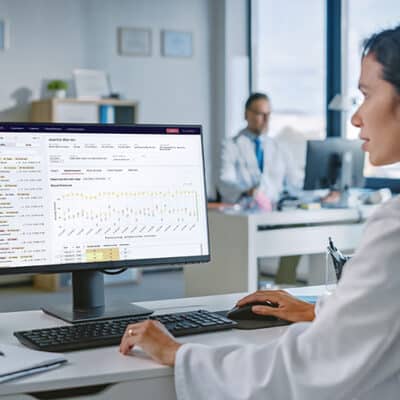Strategies for Implementing Your Remote Monitoring Program
Healthcare organizations and medical practices nationwide are implementing remote care programs to help improve clinical workflows, increase efficiency, enhance patient care, and boost reimbursement. But with so many different programs, how do you know which one(s) are right for your practice or patients? Below are some essential considerations and strategies to guide you through the design and launch of your remote monitoring program.
Identifying the Ideal Remote Care Program
Remote care programs like Chronic Care Management (CCM), Principal Care Management (PCM), Remote Patient Monitoring (RPM), and Remote Therapeutic Monitoring (RTM) offer great promise for improving care, controlling costs, and benefiting patients. These programs empower providers with remote capabilities, deeper insights, and enhanced care coordination. Likewise, they have demonstrated their effectiveness in improving patient outcomes and reducing care costs.
While all four programs contribute to patient care, they exhibit inherent differences spanning diagnostic criteria, billing practices, and clinical care team requirements. A comprehensive understanding of their differences can help facilitate more efficient and effective care. Moreover, success hinges on selecting the right remote care partner that can help deliver these services to your patients.
Understanding the Different Programs
Chronic Care Management (CCM)
Chronic care management (CCM) services are non-face-to-face services provided to Medicare beneficiaries with two or more chronic conditions expected to last at least 12 months. Through CCM, patients receive coordinated care services to help proactively manage their health. The goal of CCM services is to help keep patients engaged and proactive in their own care, enabling them to continue meeting health goals between scheduled appointments.
CCM services are usually non-face-to-face, enabling eligible practitioners to bill for a minimum of 20 minutes or more of care coordination services each month. No specific device requirements exist, and these services can be billed alongside RPM, although the time requirements must be met independently.
Principal Care Management (PCM)
Like CCM, principal care management (PCM) offers services for patients needing ongoing clinical monitoring and care coordination. However, PCM differs in that it only requires patients to have one complex chronic condition. For instance, PCM may be suitable for a patient dealing with uncontrolled diabetes, hypertension, or a high-risk individual with severe asthma, long-haul COVID-19, or various other complex chronic ailments. PCM imposes no device requirements, can be prescribed by a physician or qualified healthcare professional (QHCP), and mandates a minimum of 30 minutes per month by clinical staff, physician, or QHCP.
Remote Patient Monitoring (RPM)
Remote patient monitoring (RPM), also known as remote physiologic monitoring, utilizes digital devices to collect and monitor health data such as blood pressure, blood sugar, weight, and oxygen levels from patients in non-clinical settings. These devices securely transmit the data directly to healthcare providers, enabling continuous monitoring of a patient’s vital signs between office visits. RPM empowers physicians to take timely action if a patient’s vitals deviate from the desired levels, potentially preventing hospitalizations or readmissions. To initiate RPM, a physician or qualified healthcare provider (QHCP) must prescribe it and can bill for E/M services. Although no specific diagnosis is necessary for eligibility, RPM must be considered medically necessary, involve the use of FDA-defined devices with a minimum of 16 days of readings per 30 days, and necessitate a minimum of 20 minutes per month by clinical staff.
Remote Therapeutic Monitoring (RTM)
Remote therapeutic monitoring (RTM) involves the remote monitoring and management of non-physiological patient data, such as the condition of a patient’s musculoskeletal or respiratory system, and their adherence and response to medication and therapy. Unlike RPM, RTM can be ordered by QHCPs who cannot independently order and bill for evaluation and management (E/M) services. This includes nurse practitioners, physician assistants, physical therapists, speech and language pathologists, occupational therapists, dietitians, clinical social workers, and clinical psychologists.
Similar to RPM, RTM does not require a specific diagnosis but must be considered medically necessary. It involves the use of FDA-defined devices with a minimum of 16 days of readings per 30 days and requires at least 20 minutes of monitoring per month by clinical staff. Notably, the American Medical Association’s CPT Manual stipulates that billing for RTM and RPM simultaneously is not permitted.
Selecting Devices for Patient Monitoring
If you are considering RPM or RTM, you might want to consider what devices you want to use to monitor your patients. Depending on the chronic condition, you may consider:
- Weight scales
- Pulse oximeters
- Glucose monitors
- Blood pressure cuffs
- Temperature monitors
- Heart rate monitors
Clarify how these devices will transfer data to your practice. Most will use Bluetooth, Wi-Fi, or cellular networks. Wi-Fi and Bluetooth require a tech-comfortable user, while cellular devices are more user-friendly and may be best for patients who are apprehensive about new technology.
Make sure you understand what is required to set up each device. Then, define a clear strategy to address technology issues among staff and patients ahead of time.
Addressing Logistics for Program Success
A successful remote care program requires staff time and leadership. Define roles within your care team and communicate expectations early in the process. Logistics you may want to address with your care team and monitoring partner include:
- Patient education and enrollment
- Staff training
- Billing and claims submission
- Electronic health record (EHR) integration
- Device delivery and setup
- Health data review process
- Ensuring Staff and Patient Buy-In
If the crew isn’t on board, the ship won’t sail. Likewise, the successful launch of a remote monitoring program requires care team investment. Take the time to train staff members and engage them in conversations before implementation. Your monitoring partner may offer to assist with staff onboarding.
Patients buy-in is just as necessary. Patient adherence is critical to better health outcomes and plays a big role in reimbursement. Dialoging with patients during enrollment can go a long way. Tell patients you believe program participation is best for their health and explain how it can help them meet their goals. Depending upon their offerings, your monitoring partner may assist in patient enrollment, device setup, education, and adherence — lowering participation barriers.
Piloting Your Program
Consider launching a pilot monitoring program, initially enrolling a small number of patients. The patients in the pilot program must realize the program’s value and be moderately comfortable with technology. Starting small allows your team to work out any initial roadblocks and familiarize themselves with the program before adding more patients.
Choosing the Right Remote Care Partner
The success of your program depends heavily on selecting the right remote monitoring partner. The right partner should be able to provide support for your program with the following:
- Patient outreach
- Enrollment
- Education
- Device delivery and setup
- Adherence
- Billing
- Monitoring support
Implementation and Billing Support
Implementation is the first step toward a successful program. Selecting a partner with a complete end-to-end solution that takes care of all the logistics will enable you to focus on caring for your patients. Below are a few things that should be considered with implementation:
- Identifying program-eligible patients
- Patient enrollment
- Identifying at-risk patients
- Insurance eligibility verification
- Device setup and shipping
- Patient outreach and training
Another key consideration is EHR implementation. Seamless integration will enable you to better understand your patient population. Billing and claims reimbursement should also be efficient and not significantly burden your administrative staff. When it comes to billing and claims support for your program, your practice should look for a partner that provides the following:
- Robust onboarding process
- Convenient provider portal
- Automated charge drafts
- Time tracking
- Access to claims data for billing substantiation
- Daily generation of claims eligible for reimbursement
- Automatic repopulation to reduce claim denials and resubmittal
Whether your organization is exploring a remote care program for the first time, or you have an existing program and want to ensure it is the best fit, assessing potential partners is essential. Selecting the right partner can significantly impact the success of your program. Therefore, it’s vital to look beyond immediate needs and consider the future trajectory of your organization. By choosing a reputable, forward-thinking partner with a demonstrated history of providing cutting-edge technology and remote care services, you will be positioned for seamless implementation and organizational success.
Start The Path Toward Better Patient Care
Have questions about how remote patient monitoring for healthcare will work for you and your patients? Let’s have a conversation.
Access the Latest RPM News
Stay up to date with the latest news, articles and webinars about remote patient monitoring and telehealth.
"*" indicates required fields



